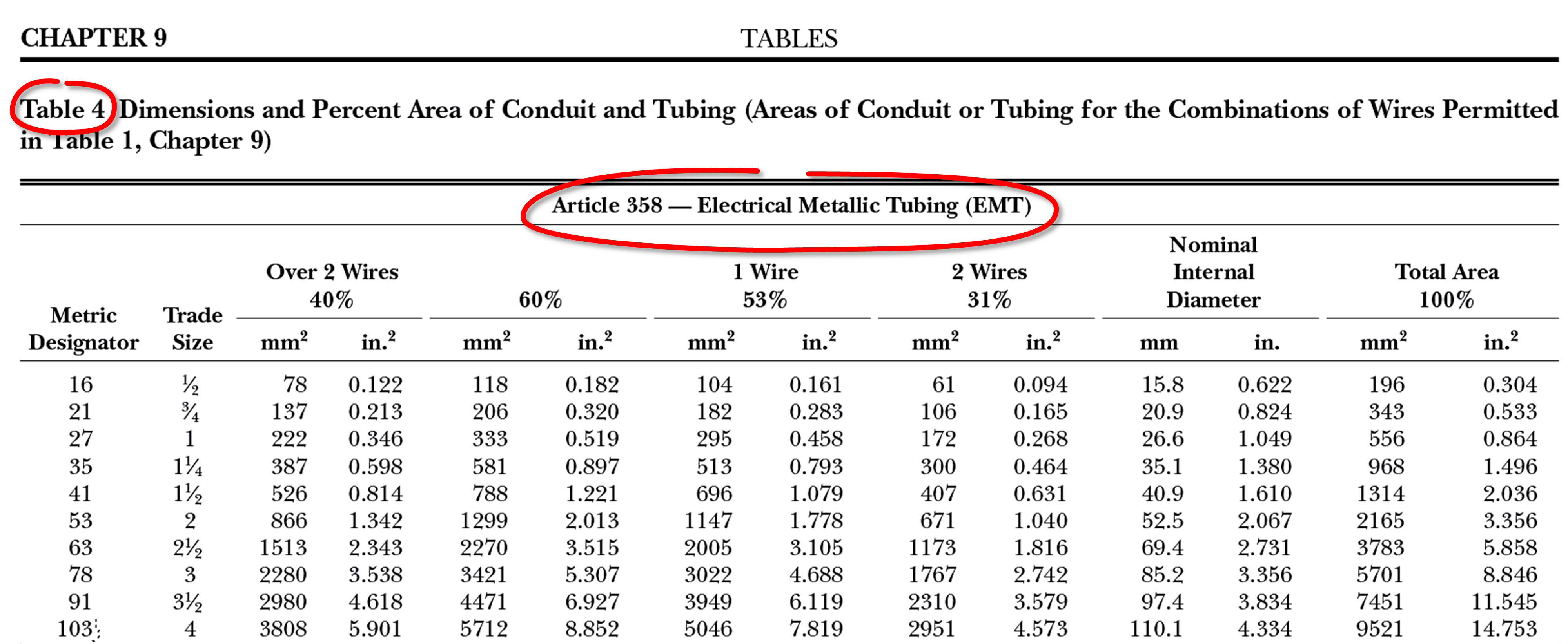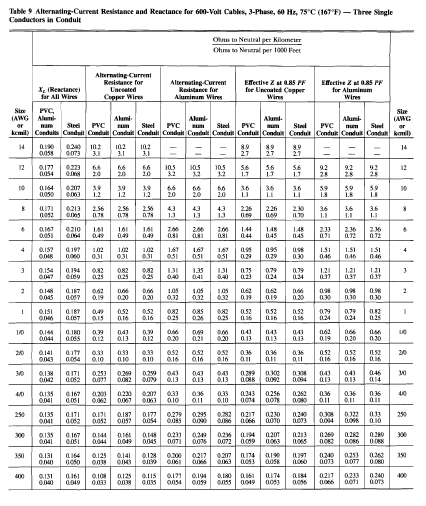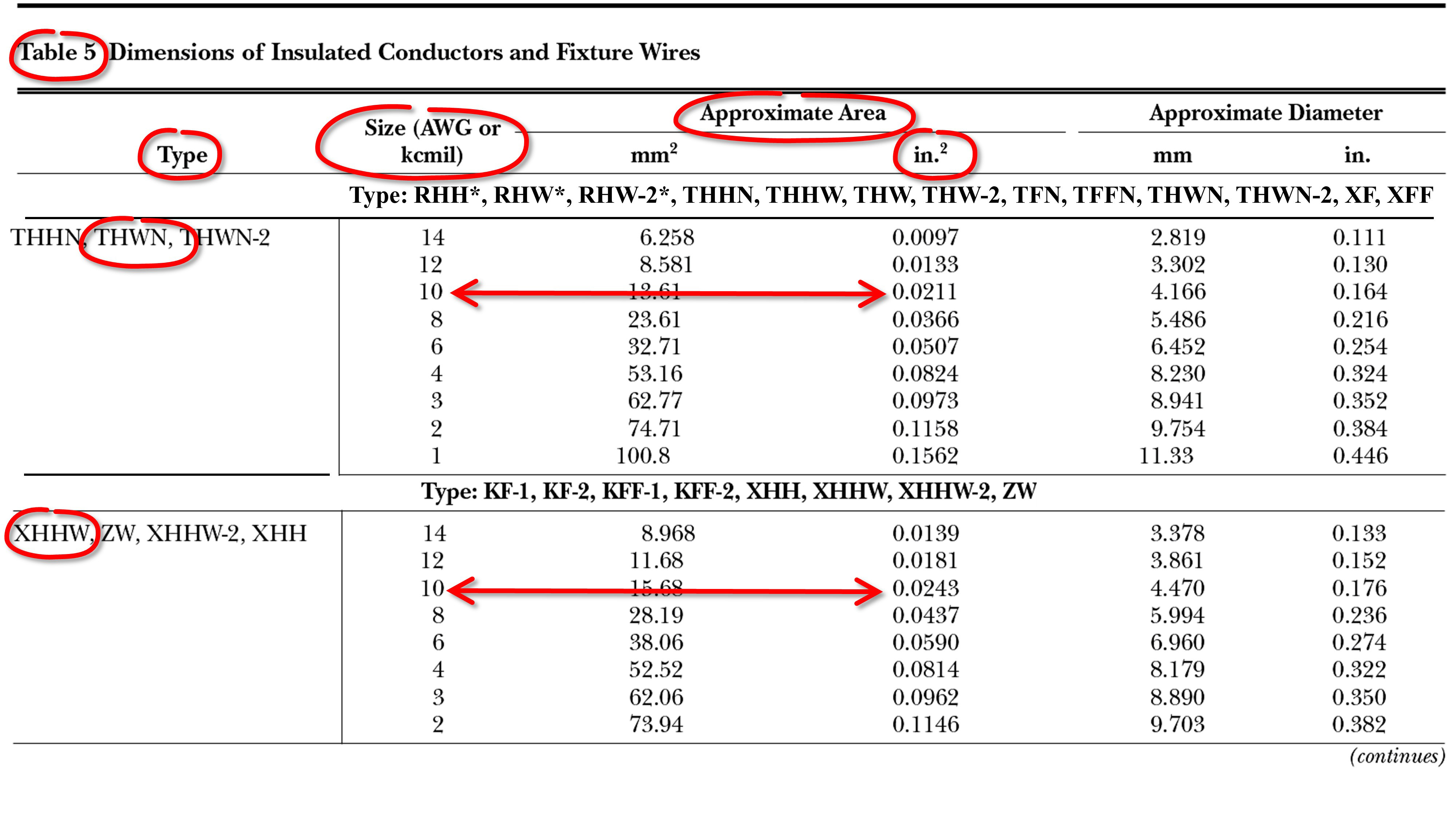Are you an electrical professional looking to stay up-to-date on the latest regulations? Look no further than NEC Chapter 9 Table 4. This table is an important tool in ensuring the safety and compliance of electrical installations, but it can be tricky to navigate. In this blog post, we'll break down the ins and outs of NEC Chapter 9 Table 4 and provide valuable insights for those in the electrical industry.
The Pain Points of NEC Chapter 9 Table 4
When it comes to electrical installations, safety is key. However, it can be difficult to ensure the safety of a system without complying with the necessary regulations. The problem is that these regulations can be complex and difficult to understand. NEC Chapter 9 Table 4 is no exception, and many electricians and engineers struggle to interpret its contents. Without a thorough understanding of this table, it can be difficult to comply with its requirements and ensure the safety of an electrical installation.
The Target of NEC Chapter 9 Table 4
NEC Chapter 9 Table 4 is a reference chart that outlines the maximum allowable ampacities for conductors in conduit or tubing. The chart takes into account the size of the conduit or tubing, as well as the insulation type and ambient temperature. The purpose of the table is to ensure that wires are not overloaded, which can lead to overheating, damage, and even fire.
Summary of Main Points
NEC Chapter 9 Table 4 is a vital tool in ensuring the safety and compliance of electrical installations. Its target is to provide maximum allowable ampacities for conductors in conduit or tubing. However, it can be difficult to interpret and understand. In the following sections, we'll dive deeper into the specifics of NEC Chapter 9 Table 4 and provide valuable insights for electrical professionals.
Understanding NEC Chapter 9 Table 4
As mentioned earlier, NEC Chapter 9 Table 4 outlines the maximum allowable ampacities for conductors in conduit or tubing. This table is essential for ensuring that wires are not overloaded, which can cause overheating and damage to the system. In my personal experience, I've found that understanding the specifics of NEC Chapter 9 Table 4 can be difficult without a bit of background knowledge.
Firstly, it's important to understand that the actual ampacity of a wire depends on factors such as the wire size, insulation type, and ambient temperature. NEC Chapter 9 Table 4 takes these factors into account and provides a reference chart for maximum allowable ampacities based on the size of the conduit or tubing.
In order to use NEC Chapter 9 Table 4 effectively, it's important to determine the size of the conduit or tubing being used. This can be done using a conduit fill chart or table, which outlines the maximum number of conductors that can be used in a given size of conduit or tubing. By using the information from the conduit fill chart or table, it's possible to determine which column of NEC Chapter 9 Table 4 to use.

Once you have determined the appropriate column, you can use the information in NEC Chapter 9 Table 4 to determine the maximum allowable ampacity for the conductors in the conduit or tubing. It's important to note that the information in NEC Chapter 9 Table 4 is based on a number of assumptions, including the use of standard conductors and typical installation conditions. If you are dealing with non-standard conditions, it may be necessary to use more specific calculations.
Common Misconceptions About NEC Chapter 9 Table 4
Despite its importance, there are several common misconceptions about NEC Chapter 9 Table 4. One common misconception is that the table provides exact values for ampacity, when in reality, it provides maximum values based on certain assumptions. It's also important to note that this table is only applicable to certain types of installations, such as those using conduit or tubing. Finally, it's important to note that NEC Chapter 9 Table 4 is updated periodically, so it's important to stay up-to-date on the latest regulations and revisions.
Why is NEC Chapter 9 Table 4 Important?
NEC Chapter 9 Table 4 is important because it helps ensure the safety and compliance of electrical installations. Without this table, electricians and engineers would have to rely on complex calculations to determine the maximum allowable ampacity for conductors. By providing a reference chart, NEC Chapter 9 Table 4 simplifies the process and ensures that electrical systems are safe and compliant.
The Future of NEC Chapter 9 Table 4
As technology and regulatory requirements continue to evolve, it's likely that NEC Chapter 9 Table 4 will be updated to reflect these changes. However, one thing is certain: the importance of this table in ensuring the safety and compliance of electrical installations will never change. As electrical professionals, it's our job to stay up-to-date on the latest regulations and use tools like NEC Chapter 9 Table 4 to ensure that our systems are safe and reliable.
Question and Answer
Q: What is NEC Chapter 9 Table 4?
A: NEC Chapter 9 Table 4 is a reference chart that outlines the maximum allowable ampacities for conductors in conduit or tubing, taking into account factors such as wire size, insulation type, and ambient temperature.
Q: How do I use NEC Chapter 9 Table 4?
A: In order to use NEC Chapter 9 Table 4, you need to determine the size of the conduit or tubing being used and use a conduit fill chart or table to determine which column of the table to use. Once you have determined the appropriate column, you can use the information in the chart to determine the maximum allowable ampacity for the conductors in the conduit or tubing.
Q: Why is NEC Chapter 9 Table 4 important?
A: NEC Chapter 9 Table 4 is important because it helps ensure the safety and compliance of electrical installations by providing a reference chart for maximum allowable ampacities for conductors in conduit or tubing. Without this table, electricians and engineers would have to rely on complex calculations to determine the maximum allowable ampacity for conductors.
Q: What are some common misconceptions about NEC Chapter 9 Table 4?
A: Some common misconceptions about NEC Chapter 9 Table 4 include that it provides exact values for ampacity, when in reality it provides maximum values based on certain assumptions. It's also important to note that this table is only applicable to certain types of installations, such as those using conduit or tubing. Finally, it's important to note that NEC Chapter 9 Table 4 is updated periodically, so it's important to stay up-to-date on the latest regulations and revisions.
Conclusion of NEC Chapter 9 Table 4
NEC Chapter 9 Table 4 is a vital tool in ensuring the safety and compliance of electrical installations. By providing a reference chart for maximum allowable ampacities for conductors in conduit or tubing, this table simplifies the process of determining the maximum allowable ampacity and ensures that electrical systems are safe and compliant. While there may be some misunderstandings about this table, its importance in the electrical industry cannot be overstated.
Gallery
Voltage Drop Calculation Based On National Electrical Code - Electrical

Photo Credit by: bing.com / resistance voltage drop calculation copper nec electrical table code chapter national conductor wires based wire motor sizes same hp example
Conduit Fill Table Nec | Awesome Home

Photo Credit by: bing.com /
[Solved] Where Exposed To The Weather, Raceways Shall Be: A) Rainproof
Photo Credit by: bing.com /
6+ Nec Chapter 9 Table 5 - MaeShadleen

Photo Credit by: bing.com /
Electrical - How Do I Determine The Fill Rating Of A Conduit? - Home

Photo Credit by: bing.com / conduit fill electrical chart table wire 40 conductors chapter pvc size pipe wires area tables romex inch cross sectional according